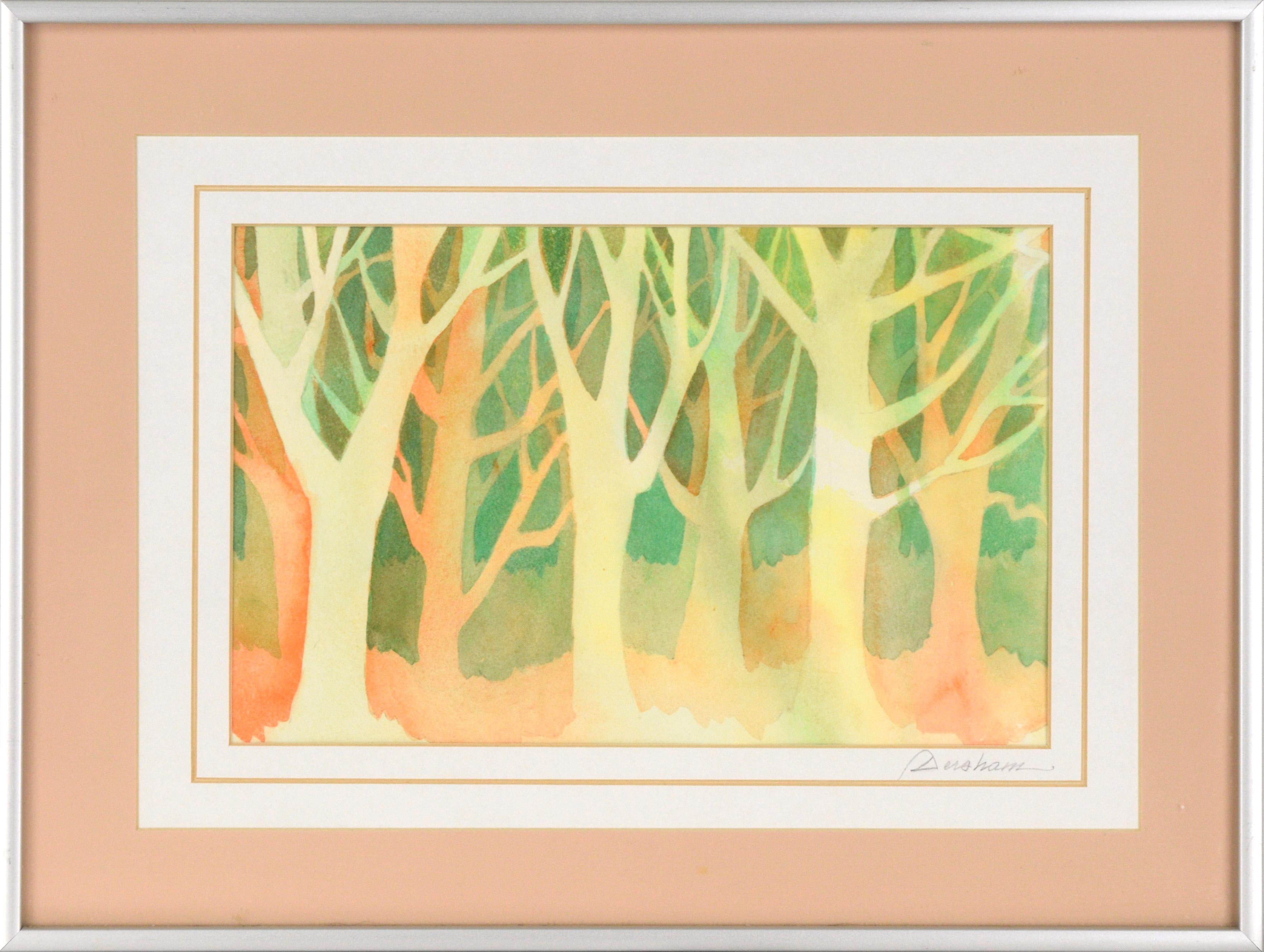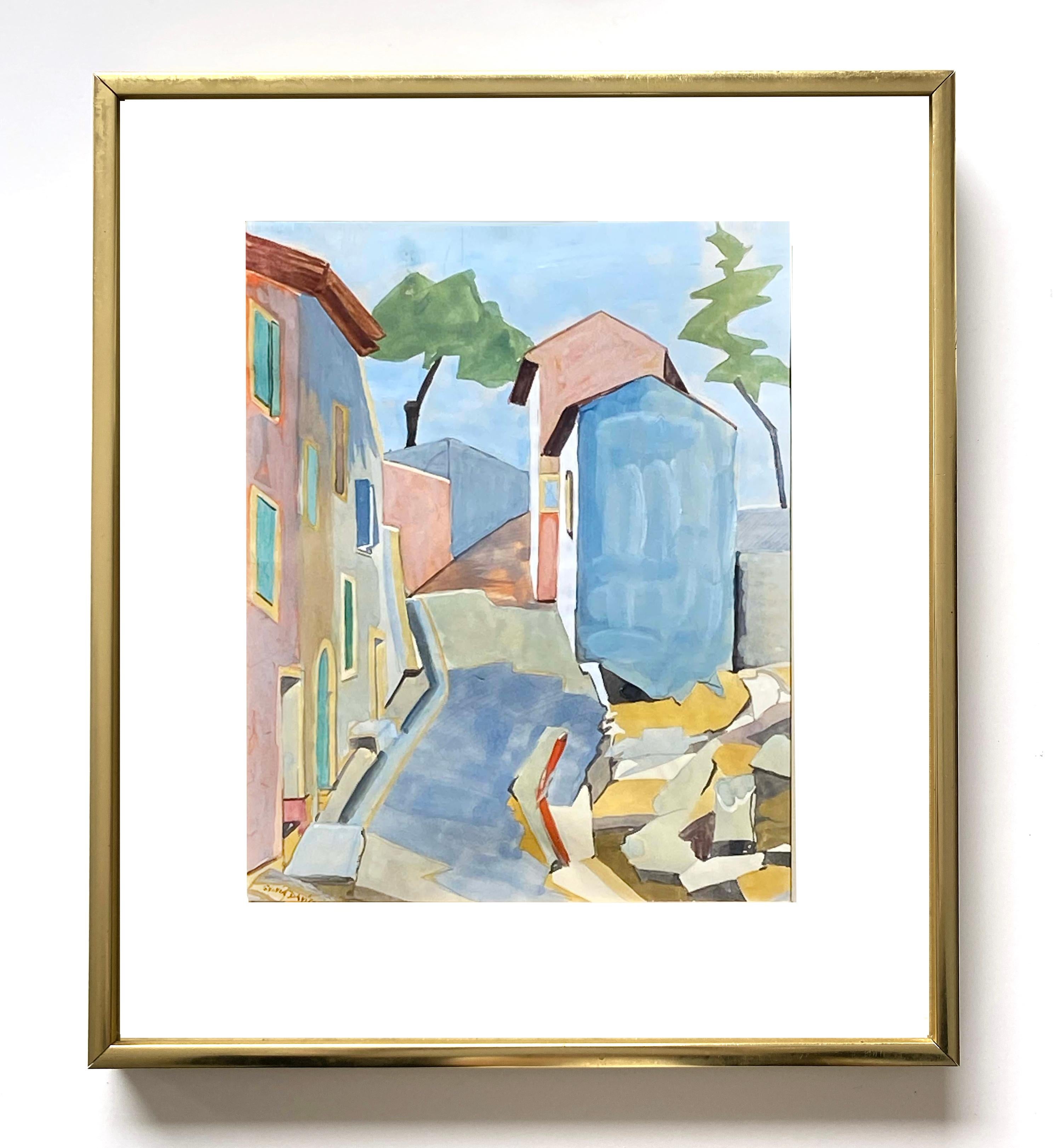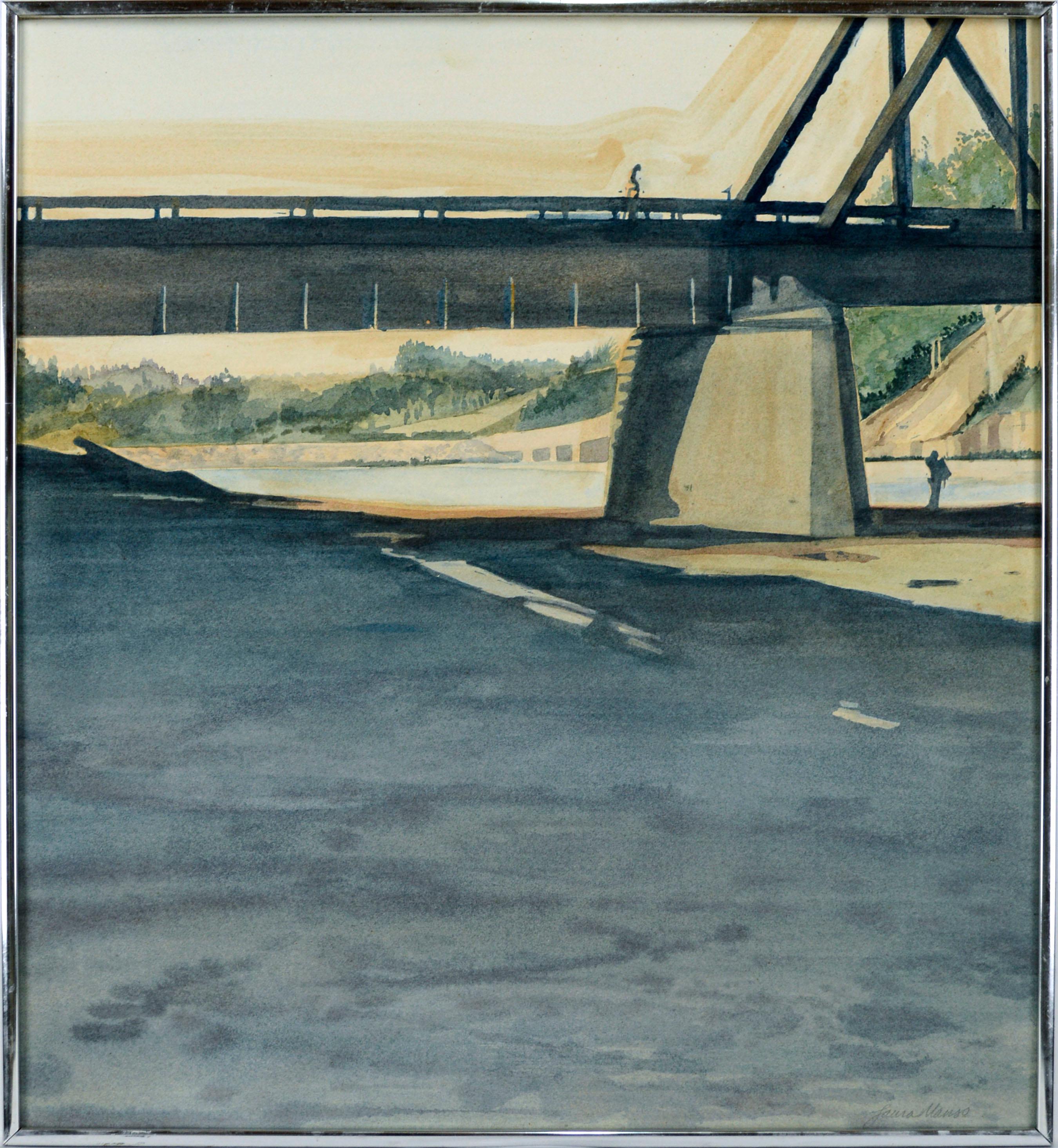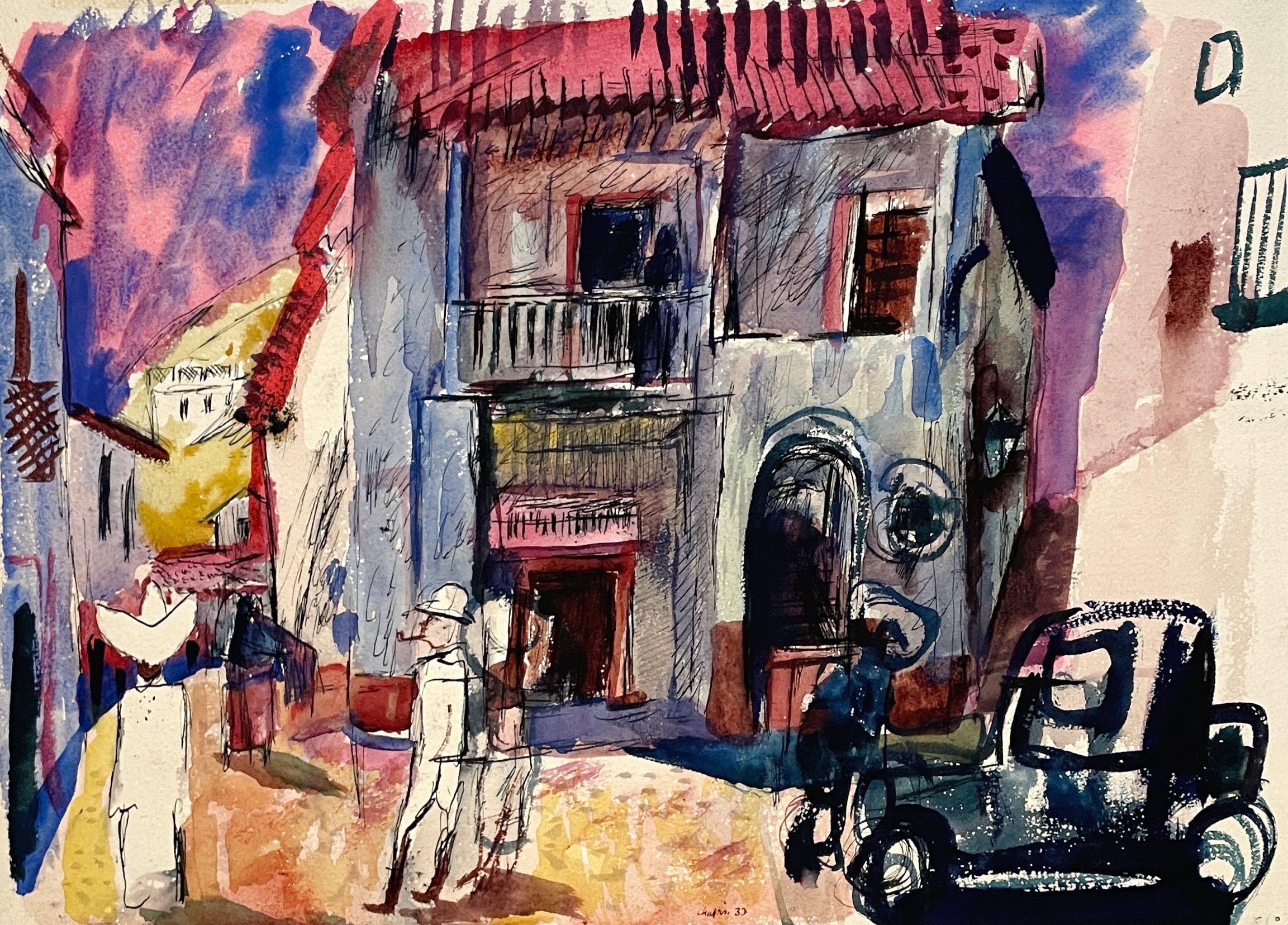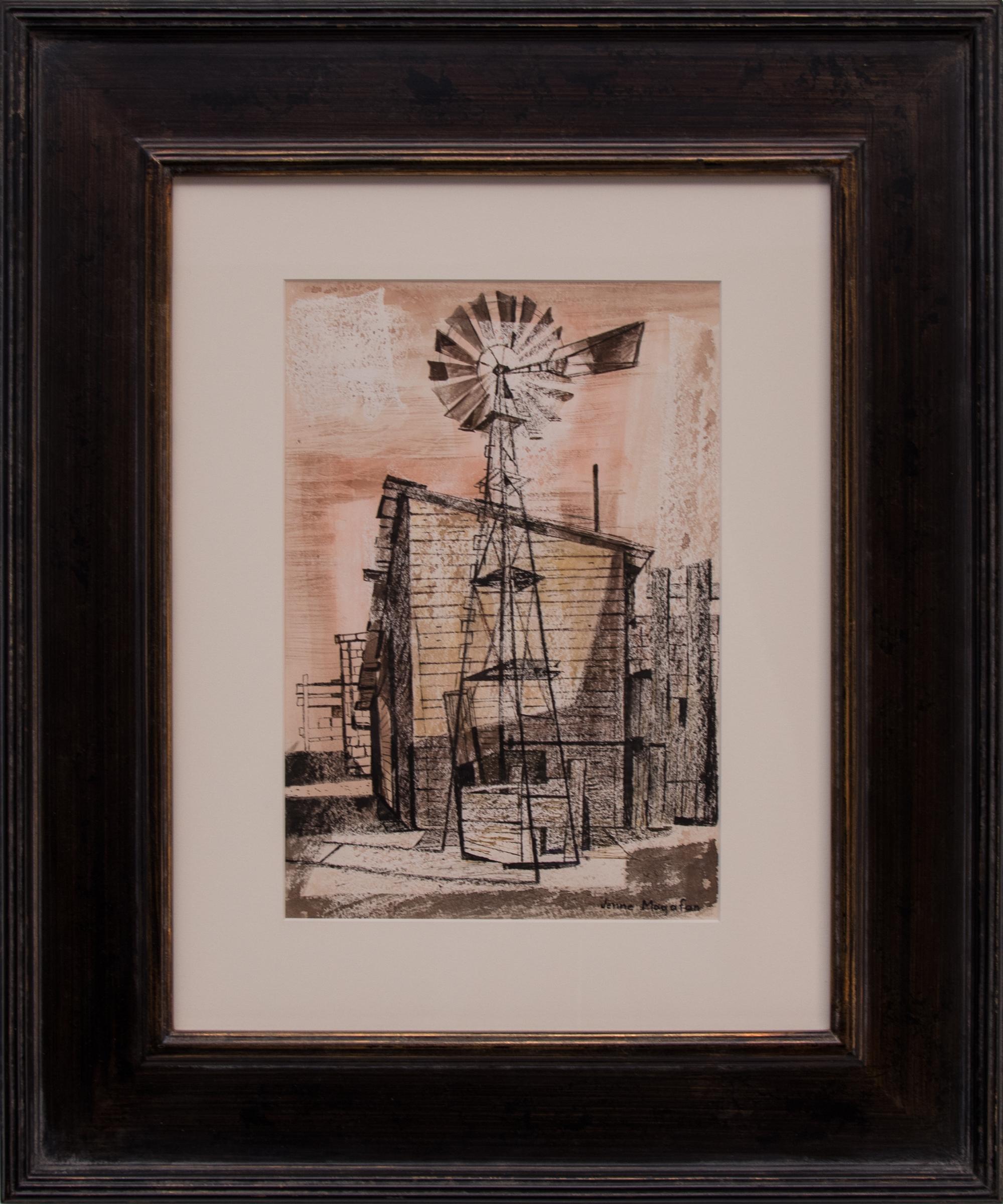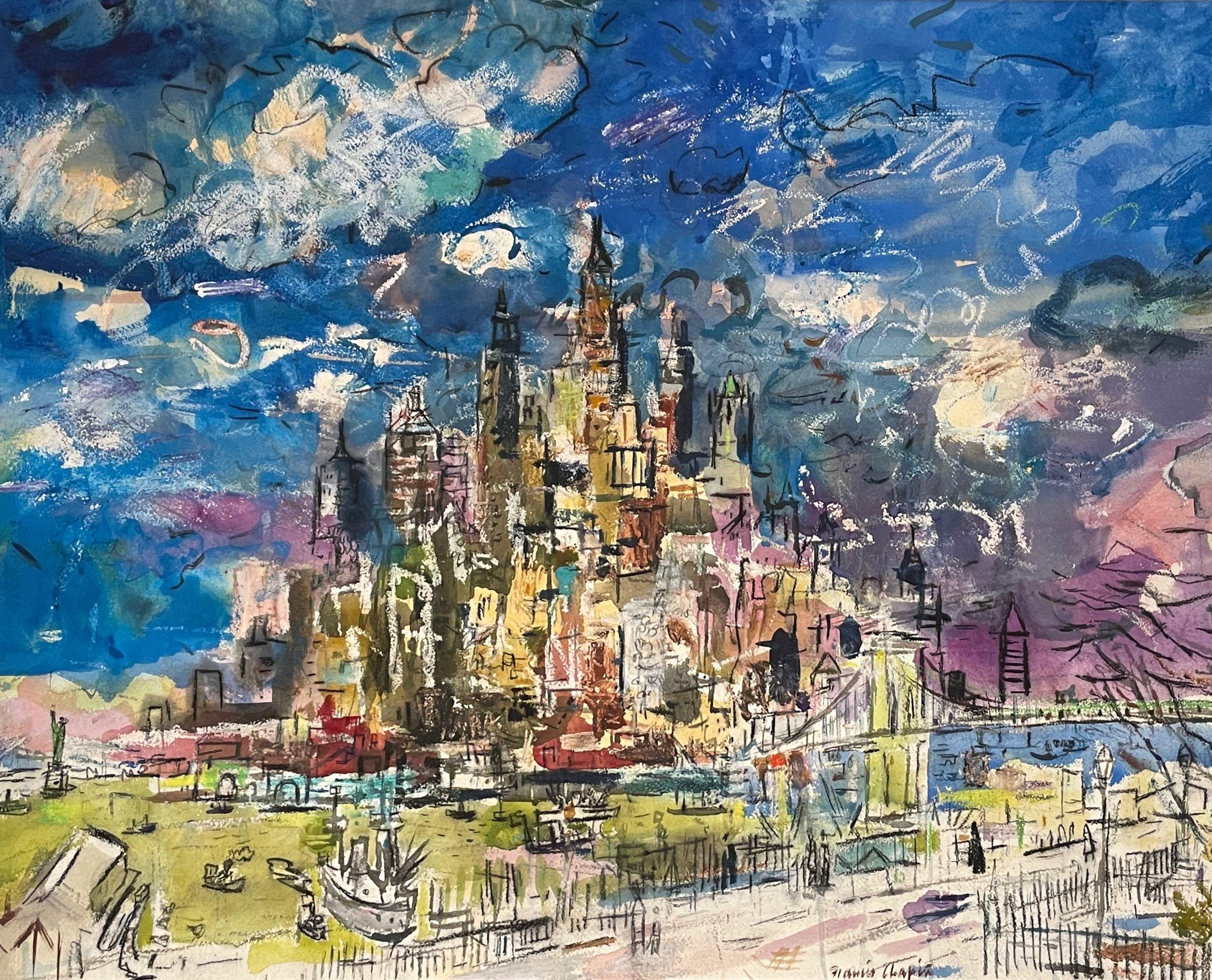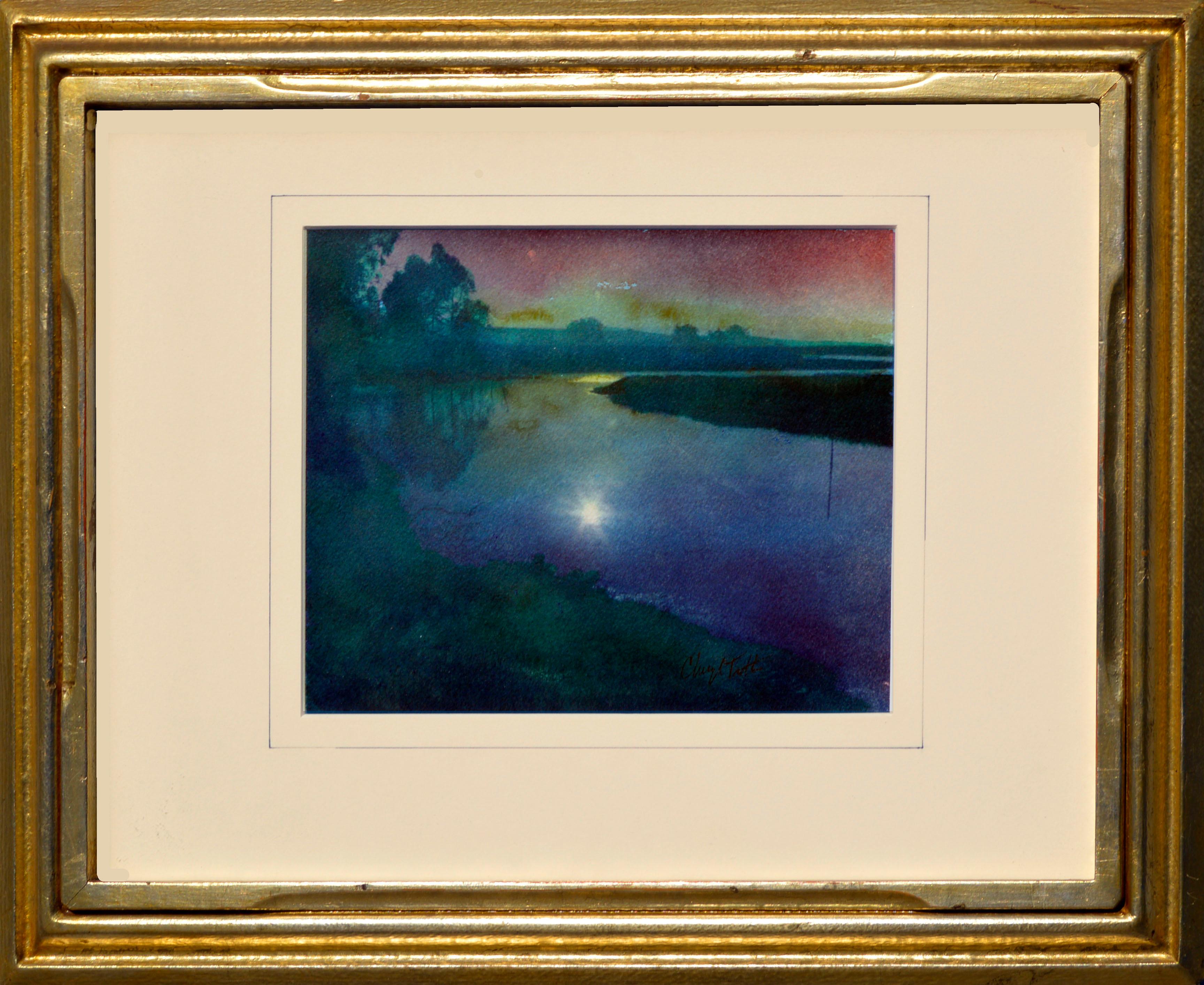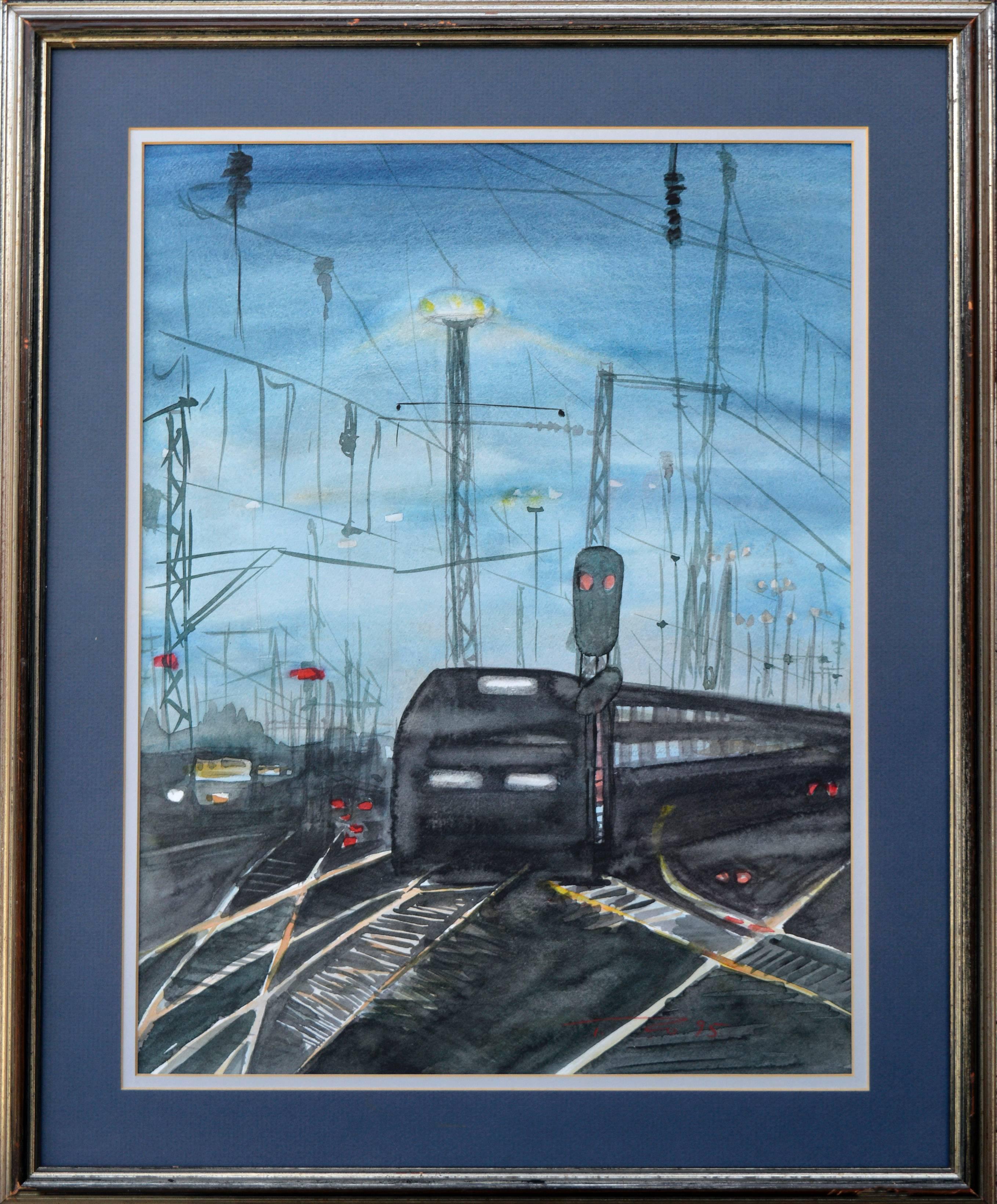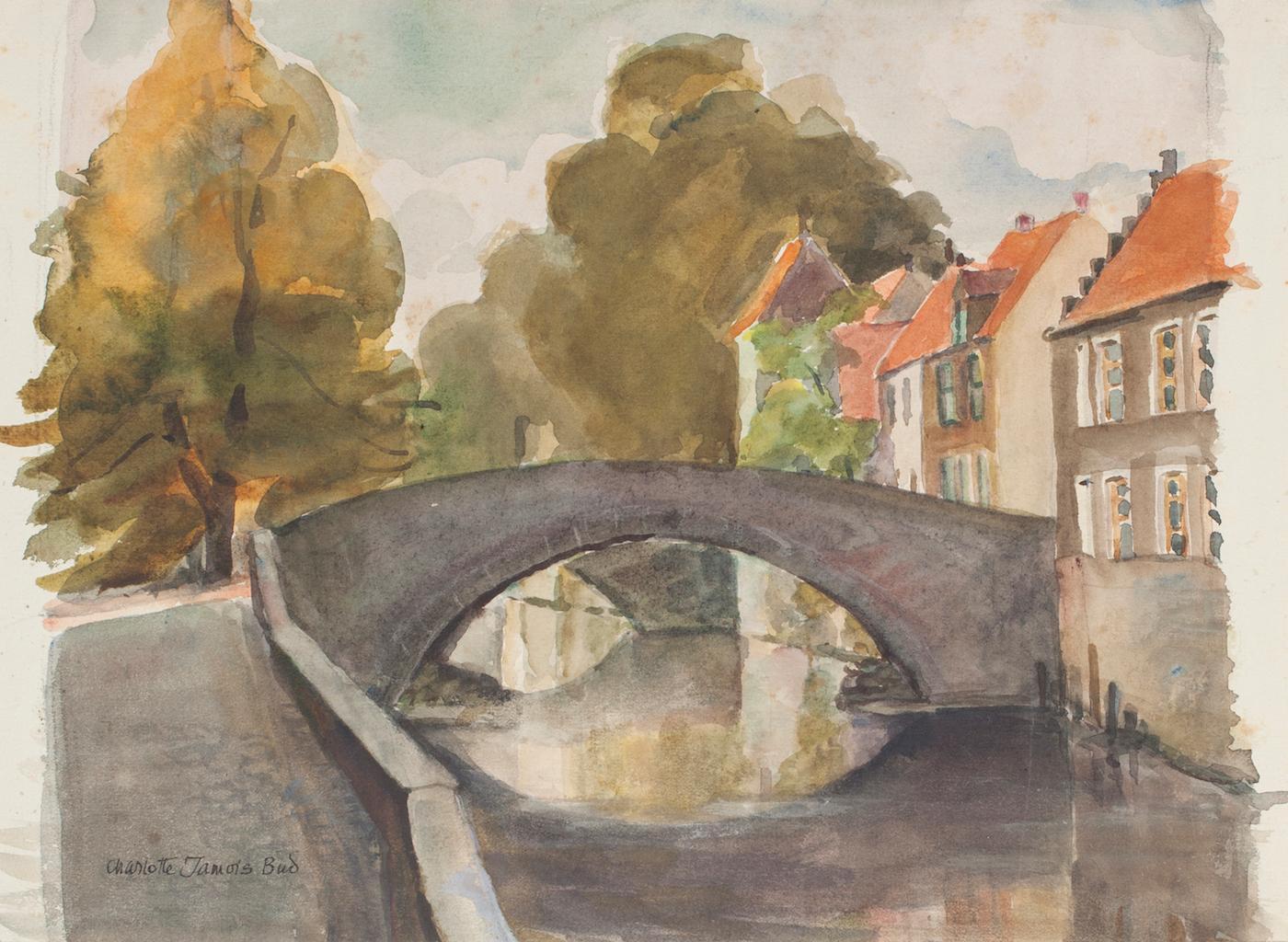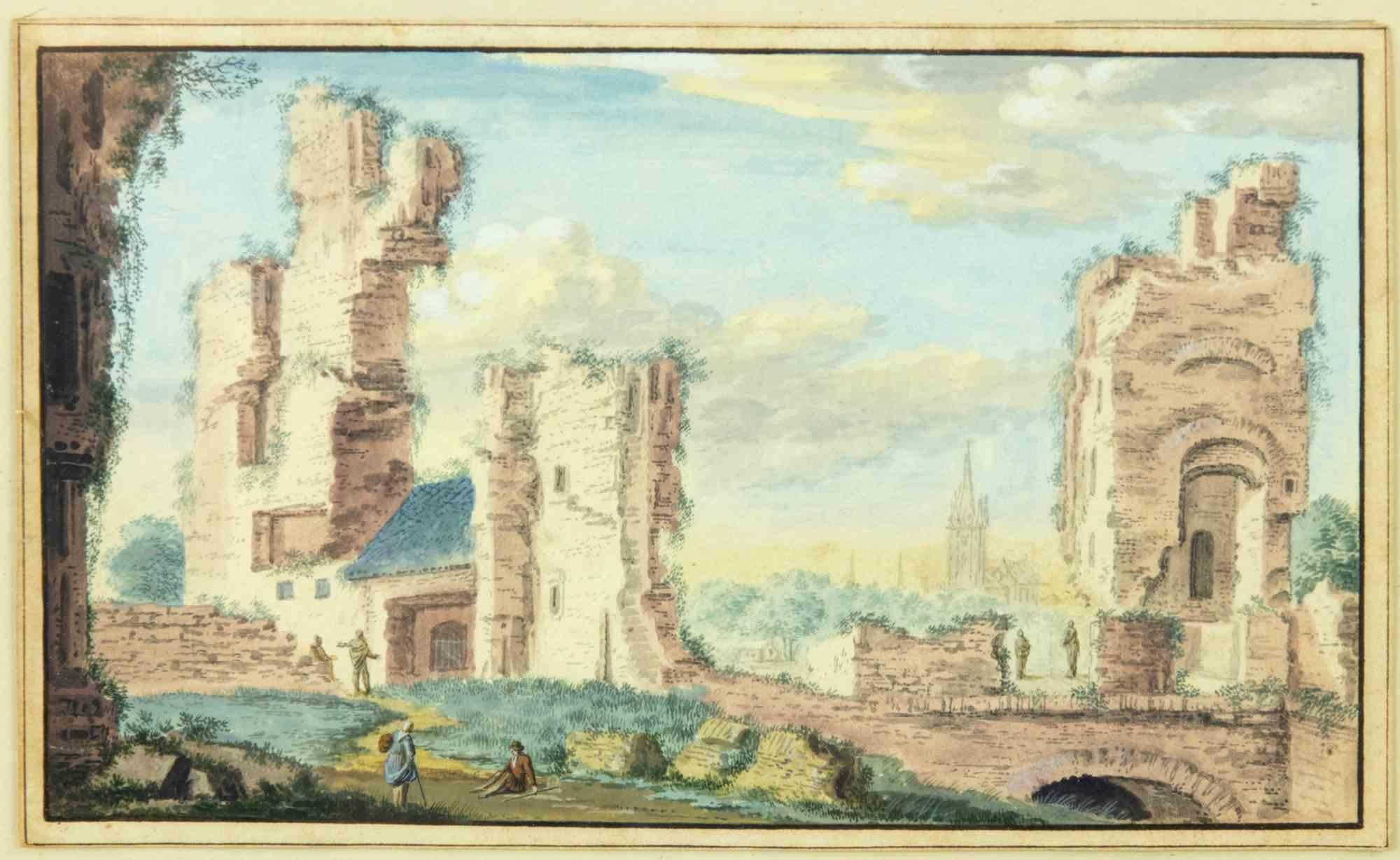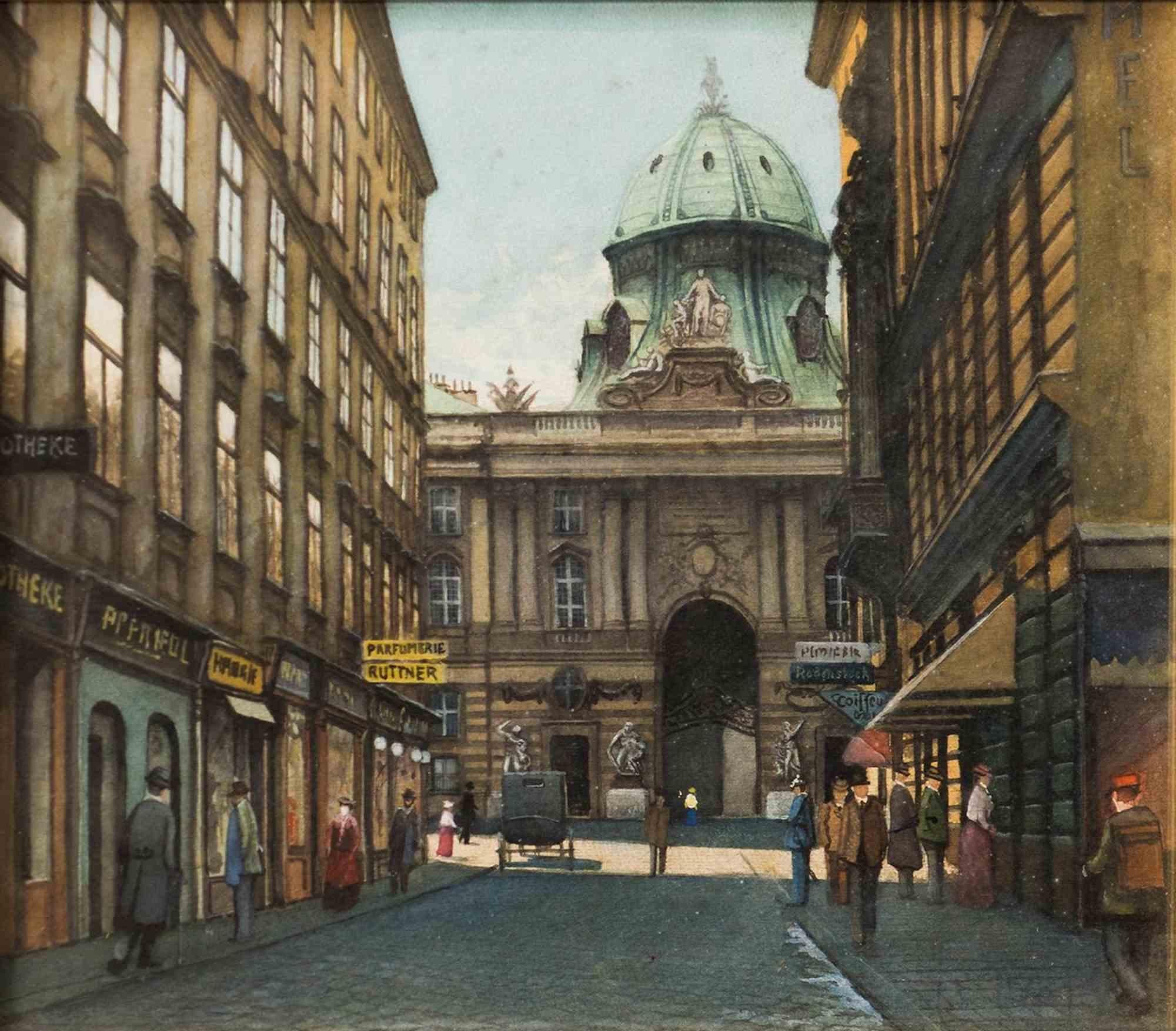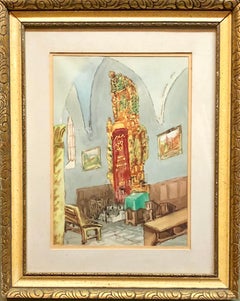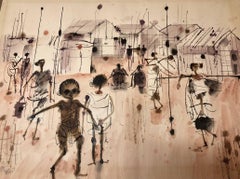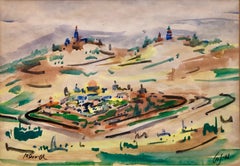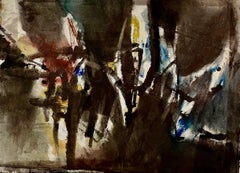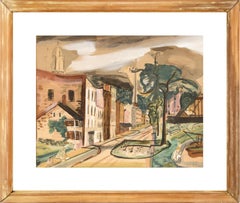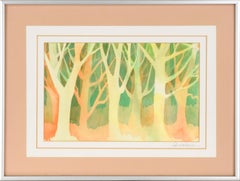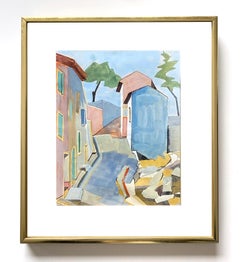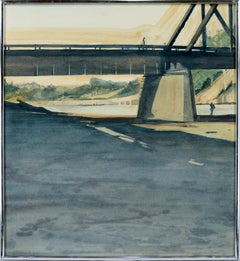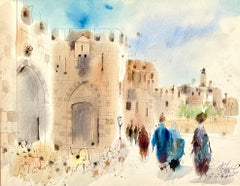
Jaffa Gate Jerusalem Original Israeli Judaica Watercolor Painting Bezalel School
View Similar Items
Want more images or videos?
Request additional images or videos from the seller
1 of 9
Shmuel KatzJaffa Gate Jerusalem Original Israeli Judaica Watercolor Painting Bezalel School
Price:$1,925
$2,250List Price
About the Item
- Creator:Shmuel Katz (1926 - 2010, Austrian, Israeli)
- Dimensions:Height: 28 in (71.12 cm)Width: 33.5 in (85.09 cm)
- Medium:
- Movement & Style:
- Period:
- Condition:good. needs new mat and frame.
- Gallery Location:Surfside, FL
- Reference Number:Seller: 1981stDibs: LU38210295122
About the Seller
4.9
Platinum Seller
Premium sellers with a 4.7+ rating and 24-hour response times
Established in 1995
1stDibs seller since 2014
1,791 sales on 1stDibs
Authenticity Guarantee
In the unlikely event there’s an issue with an item’s authenticity, contact us within 1 year for a full refund. DetailsMoney-Back Guarantee
If your item is not as described, is damaged in transit, or does not arrive, contact us within 7 days for a full refund. Details24-Hour Cancellation
You have a 24-hour grace period in which to reconsider your purchase, with no questions asked.Vetted Professional Sellers
Our world-class sellers must adhere to strict standards for service and quality, maintaining the integrity of our listings.Price-Match Guarantee
If you find that a seller listed the same item for a lower price elsewhere, we’ll match it.Trusted Global Delivery
Our best-in-class carrier network provides specialized shipping options worldwide, including custom delivery.More From This Seller
View AllIsraeli Modernist Safed Synagogue Interior Folk Art Watercolor Painting
By Zvi Ehrman
Located in Surfside, FL
In this piece the artist choice of colors is vibrant, and there is minimal blending of them. The artist takes a naive, Folk Art approach at rendering the subject simplifying the figu...
Category
Mid-20th Century Modern Landscape Drawings and Watercolors
Materials
Paper, Watercolor
Djibouti, African Landscape Original Israeli Watercolor Cityscape Painting
Located in Surfside, FL
Subject: Cityscape, signed in Hebrew
Medium: Watercolor
Surface: Paper
Shmuel Katz (Hebrew: שמואל כ"ץ) (August 18, 1926 – March 26, 2010) was an Israeli artist, illustrator, and car...
Category
20th Century Modern Landscape Drawings and Watercolors
Materials
Paper, Watercolor
Israeli Modernist Watercolor Painting Jerusalem Landscape Bezalel School Avniel
By Mordechai Avniel
Located in Surfside, FL
Watercolor painting of Old City of Jerusalem
MORDECHAI AVNIEL
Minsk, Belarus, b. 1900, d. 1989
Mordecai Dickstein (later Avniel) was born in 1900 in Minsk, present-day Belarus. He studied fine arts in Yekaterinburg, Russia (1913–19) and at the Bezalel Academy of Art and Design, Jerusalem (1923). Avniel immigrated to Palestine in 1921 where he first worked as a pioneer in citrus plantations near Petah Tikva. In 1923, at the urging of Boris Schatz, he went to Jerusalem to further his art studies at Bezalel. He later taught painting and sculpture at the school, and served a term as director of the Small Sculpture Section of the Sculpture Department (1924–28). From 1935 on, Avniel lived in Haifa. Avniel was also a lawyer and a founding partner of the Haifa firm Avniel, Salomon & Company.
Avniel regularly showed his work in group exhibitions of the Painters and Sculptors' Association of Israel. He was awarded the Herman Struck Prize (1952), Tenth Anniversary Prize for Watercolours, Ramat Gan (1958), Histadrut Prize (1961), and First Prize Haifa Municipality (1977). He represented Israel at the 1958 Venice Biennale and the 1962 International Art Seminar at Fairleigh Dickinson University. Avniel was a member of the Artists' Colony in Safed and maintained a studio on Mount Carmel.
Mordechai Avniel is best known for his deft and singular landscape work.
His works are held in numerous museums and collections both in Israel and abroad, including the Metropolitan Museum, New York and the Carnegie Institute, Pittsburgh, PA. Avniel's manipulations of light and colour share much with those of compatriot artists Shimshon Holzman and Joseph Kossonogi.
Education
1913-19 Art School of Katrinburg, Russia
1923 Bezalel School of Art, Jerusalem
Selected exhibitions:
2004: Our Landscape: Notes on Landscape Painting in Israel, University of Haifa Art Gallery, Haifa (online catalogue)
1965: Mordechai Avniel Retrospective, Haifa Municipality Museum of Modern Art, Haifa
1964: Galerie Synthèse, Paris
1962: New York University, New York
1961: Rina Gallery of Modern Art, Jerusalem
The Autumn Exhibition Rina Gallery, Jerusalem
Artists: Dedi Ben Shaul, Lea Nikel, Yossef Zaritsky,Ephraim Fima Roytenberg, Zvi Meirovich, Aharon Kahana, Avigdor Stematsky, Mordechai Levanon, Yosl Bergner, Israel Paldi...
Category
20th Century Modern Interior Drawings and Watercolors
Materials
Paper, Watercolor
Modernist Abstract Expressionist Watercolor Painting Bauhaus Weimar Pawel Kontny
By Pawel Kontny
Located in Surfside, FL
Abstract watercolor composition bearing the influence of the earlier color-block compositions of Paul Klee.
Pawel August Kontny, (Polish-German-American artist) He was born in Laurahuette, Poland, in 1923, the son of a wealthy pastry shop owner. In 1939 he began studying architecture in Breslau where he was introduced to the European masters and to the work of some of the German Expressionists, soon afterward banned as "degenerate artists" and removed from museums throughout Germany by the Nazi regime. His studies were interrupted by World War II. Drafted into the German army, traveling in many countries as a soldier, he sketched various landscapes but in 1945, he was captured and held as a prisoner of war in Italy. After the war, he studied at the Union of Nuremberg Architects to help design buildings to replace ones destroyed in the war. He recorded his impressions of the local population and the landscapes through his watercolors and drawings. Pawel Kontny thereafter moved to Nuremberg, Germany, becoming a member of the Union of Nuremberg Architects and helping to rebuild the city's historic center. He soon decided to concentrate on his professional art career. He married Irmgard Laurer, a dancer with the Nuremberg Opera. Pavel Kontny 's career as an artist was launched with his participation in an all German exhibition, held at the Dusseldorf Museum in 1952. He held one-man shows in Germany, Switzerland and the United States. During his trip to the United States in 1960, Kontny became instantly enamored with Colorado, and decided to relocate to Cherry Hills with his wife and two children. He quickly established himself in the local art community, being affiliated for a time with Denver Art Galleries and Saks Galleries. His subject matter became the Southwest. During this time he received the Prestigious Gold Medal of the Art Academy of Rome. His extensive travel provided material for the paintings he did using his hallmark marble dust technique. he also worked equally in pastel, watercolor, charcoal and pencil-and-ink. in a style which merged abstraction and realist styles, influenced by Abstract Expressionist painting and South Western American landscapes. This one bears the influence of Sam Francis. In the early 1960s he was one of only a few European-born professional artists in the state, a select group that included Herbert Bayer (1900-1985), a member of the prewar Bauhaus in Weimar and Dessau, Germany, and Roland Detre...
Category
20th Century American Modern Abstract Drawings and Watercolors
Materials
Watercolor, Archival Paper
Modernist Abstract Expressionist Watercolor Painting Bauhaus Weimar Pawel Kontny
By Pawel Kontny
Located in Surfside, FL
Abstract watercolor composition bearing the influence of the earlier color-block compositions of Paul Klee.
Pawel August Kontny, (Polish-German-American artist) He was born in Laurahuette, Poland, in 1923, the son of a wealthy pastry shop owner. In 1939 he began studying architecture in Breslau where he was introduced to the European masters and to the work of some of the German Expressionists, soon afterward banned as "degenerate artists" and removed from museums throughout Germany by the Nazi regime. His studies were interrupted by World War II. Drafted into the German army, traveling in many countries as a soldier, he sketched various landscapes but in 1945, he was captured and held as a prisoner of war in Italy. After the war, he studied at the Union of Nuremberg Architects to help design buildings to replace ones destroyed in the war. He recorded his impressions of the local population and the landscapes through his watercolors and drawings. Pawel Kontny thereafter moved to Nuremberg, Germany, becoming a member of the Union of Nuremberg Architects and helping to rebuild the city's historic center. He soon decided to concentrate on his professional art career. He married Irmgard Laurer, a dancer with the Nuremberg Opera. Pavel Kontny 's career as an artist was launched with his participation in an all German exhibition, held at the Dusseldorf Museum in 1952. He held one-man shows in Germany, Switzerland and the United States. During his trip to the United States in 1960, Kontny became instantly enamored with Colorado, and decided to relocate to Cherry Hills with his wife and two children. He quickly established himself in the local art community, being affiliated for a time with Denver Art Galleries and Saks Galleries. His subject matter became the Southwest. During this time he received the Prestigious Gold Medal of the Art Academy of Rome. His extensive travel provided material for the paintings he did using his hallmark marble dust technique. he also worked equally in pastel, watercolor, charcoal and pencil-and-ink. in a style which merged abstraction and realist styles, influenced by Abstract Expressionist painting and South Western American landscapes. This one bears the influence of Sam Francis. In the early 1960s he was one of only a few European-born professional artists in the state, a select group that included Herbert Bayer (1900-1985), a member of the prewar Bauhaus in Weimar and Dessau, Germany, and Roland Detre...
Category
20th Century American Modern Abstract Drawings and Watercolors
Materials
Watercolor, Archival Paper
Modernist Abstract Expressionist Watercolor Painting Bauhaus Weimar Pawel Kontny
By Pawel Kontny
Located in Surfside, FL
Abstract watercolor composition bearing the influence of the earlier color-block compositions of Paul Klee.
Pawel August Kontny, (Polish-German-American artist) He was born in Laurahuette, Poland, in 1923, the son of a wealthy pastry shop owner. In 1939 he began studying architecture in Breslau where he was introduced to the European masters and to the work of some of the German Expressionists, soon afterward banned as "degenerate artists" and removed from museums throughout Germany by the Nazi regime. His studies were interrupted by World War II. Drafted into the German army, traveling in many countries as a soldier, he sketched various landscapes but in 1945, he was captured and held as a prisoner of war in Italy. After the war, he studied at the Union of Nuremberg Architects to help design buildings to replace ones destroyed in the war. He recorded his impressions of the local population and the landscapes through his watercolors and drawings. Pawel Kontny thereafter moved to Nuremberg, Germany, becoming a member of the Union of Nuremberg Architects and helping to rebuild the city's historic center. He soon decided to concentrate on his professional art career. He married Irmgard Laurer, a dancer with the Nuremberg Opera. Pavel Kontny 's career as an artist was launched with his participation in an all German exhibition, held at the Dusseldorf Museum in 1952. He held one-man shows in Germany, Switzerland and the United States. During his trip to the United States in 1960, Kontny became instantly enamored with Colorado, and decided to relocate to Cherry Hills with his wife and two children. He quickly established himself in the local art community, being affiliated for a time with Denver Art Galleries and Saks Galleries. His subject matter became the Southwest. During this time he received the Prestigious Gold Medal of the Art Academy of Rome. His extensive travel provided material for the paintings he did using his hallmark marble dust technique. he also worked equally in pastel, watercolor, charcoal and pencil-and-ink. in a style which merged abstraction and realist styles, influenced by Abstract Expressionist painting and South Western American landscapes. This one bears the influence of Sam Francis. In the early 1960s he was one of only a few European-born professional artists in the state, a select group that included Herbert Bayer (1900-1985), a member of the prewar Bauhaus in Weimar and Dessau, Germany, and Roland Detre...
Category
20th Century American Modern Abstract Drawings and Watercolors
Materials
Watercolor, Archival Paper
You May Also Like
"To Market To Market", Early 20th Century Figurative Brooklyn Cityscape
Located in Soquel, CA
"To Market To Market", a whimsical early 20th century modern figurative village landscape by Frank Simon Herrmann (American, 1866-1942). In this charming scene of a downtown village ...
Category
Early 20th Century Modern Landscape Drawings and Watercolors
Materials
Paper, Gouache
Abstracted Forest Landscape
Located in Soquel, CA
Brightly colored abstract forest by unknown artist Dersham (20th Century). The trees in this piece are light in color, standing out from the saturated background. Multiple layers of ...
Category
Late 20th Century American Modern Landscape Drawings and Watercolors
Materials
Paper, Watercolor
$280 Sale Price
20% Off
French Cubist Landscape Gouache Painting Framed Original Gallery Label
Located in Buffalo, NY
Gouache of a French cityscape titled "Street in Gordes France" by Sylvia Davis. This piece was originally part of the lending and sales gallery of the Memorial Art Gallery of the Uni...
Category
1960s Modern Landscape Drawings and Watercolors
Materials
Paper, Watercolor, Gouache
$871 Sale Price
20% Off
Santa Cruz Boardwalk Railroad Trestle Bridge, Vintage Figurative Landscape
Located in Soquel, CA
Vintage mid-1970's landscape watercolor of small figures on the famous Santa Cruz Boardwalk Railroad Bridge by Laura Manss Matarazzo (American, b...
Category
1970s Modern Landscape Drawings and Watercolors
Materials
Paper, Watercolor
MOMA Exhibited Watercolor by Chicago Artist Francis Chapin, "Tourists in Taxco"
By Francis Chapin
Located in Chicago, IL
A charming, vibrant, early Mexican city street scene by famed Chicago Modern artist Francis Chapin (Am. 1899-1965). Titled "Tourists in Taxco", the watercolor was exhibited at the M...
Category
1930s American Modern Landscape Drawings and Watercolors
Materials
Paper, Watercolor
Jenne Magafan “Windmill on the Plains” 1940s Colorado Watercolor, Framed
By Jenne Magafan
Located in Denver, CO
"Windmill on the Plains" is an original watercolor and ink on paper painting by acclaimed 20th-century Colorado artist Jenne Magafan (1916–1952). Created in the 1940s, this evocative...
Category
1940s American Modern Landscape Drawings and Watercolors
Materials
Watercolor, Ink, Paper
Recently Viewed
View AllMore Ways To Browse
Galilee Painting
Ruth Alexander
Shraga Weil
Courtroom Sketches
Iran Poster
Lebanon Poster
Yossi Stern
Lebanon Vintage Poster
Vintage Lebanese Posters
Iranian Judaica
Calman Shemi Original Paintings
Rina Sutzkever
Michael Poole
Monhegan Watercolors
James Torlakson
John Cowan
Pencil And Charcoal Drawing Of Trees
Robert Tucker

